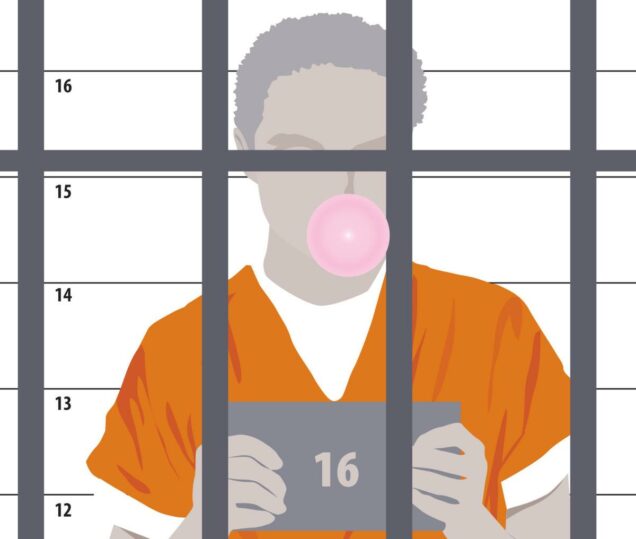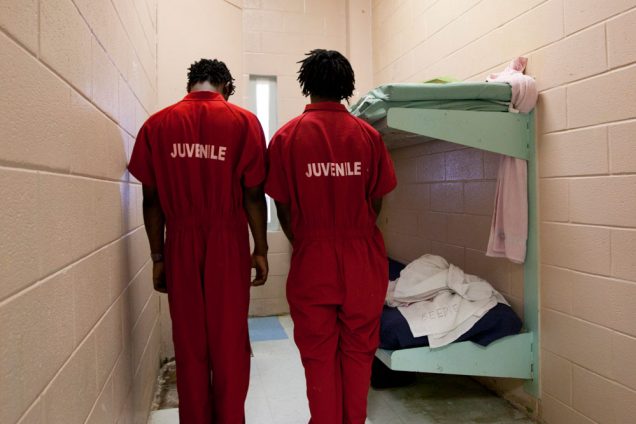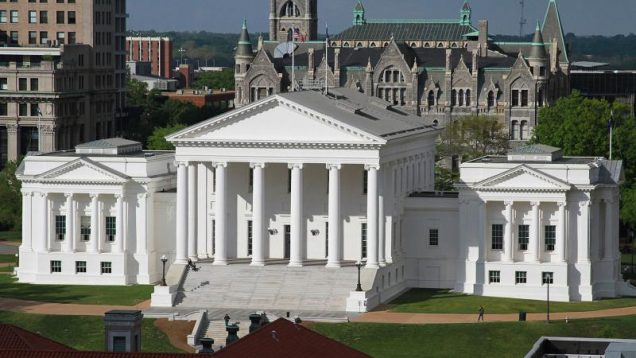Tagged: BU Law
The American Family Act is both Effective Policy and Politically Viable, Let’s Make it Law
With the 2020 Democratic Primary underway, candidates are engaged in a ‘race to the left’ defined by progressive proposals for expansive federal programs aimed to combat social, economic, and environmental injustices. Underpinning these ideas is the belief in government as an effective mechanism for improving the lives of Americans and a strong rebuke of the Republican tenants that small government, deregulation, and tax cuts are the appropriate tools to lift up the impoverished, marginalized and economically struggling.
The American Family Act of 2019 (AFA) seems to be another progressive policy with noble aims, but dim prospects for bipartisan support. Most recently introduced in March 2019 by co-sponsors Senator Michael Bennet (D-CO) and Senator Sherrod Brown (D-OH), the AFA aims to reconfigure and expand the Child Tax Credit (CTC) to more effectively combat childhood poverty by increasing the financial support and removing the implicit work requirement. However, upon closer examination of its tax-focused policy structure and pro-family political implications, the AFA is distinct from other progressive Democratic proposals because it has the ability to transcend the traditional divisiveness surrounding social welfare legislation. Thus, if framed correctly and advocated for effectively, the AFA is an endangered species in today’s gridlocked and sharply divided Congress: a sweeping progressive policy with political viability.
 Enacted in 1997, and expanded since with broad bipartisan support, the CTC is an anti-poverty measure that aims to mitigate the costs of raising children through a tax deduction of up to $2,000 per year for each eligible child. The CTC is administered primarily through a non-refundable tax credit, where a family’s income tax liability is reduced by the credit value. Families without taxable income—or whose taxes are below the credit value—are excluded from taking full advantage of the credit. The CTC partially accounts for this with a refundable option for these families. However, eligibility is still subject to a taxable earnings requirement of $2500. Furthermore, refundable credits are capped at 15% of taxable income and $1400 annually. These limitations exclude the poorest and most vulnerable children from the benefit. Roughly 27 million children under seventeen are ineligible for the full credit and many don’t qualify at all. Despite its shortcomings, the CTC functions as an effective tool for alleviating child poverty, lifting one in six previously poor children and their families out of poverty each year.
Enacted in 1997, and expanded since with broad bipartisan support, the CTC is an anti-poverty measure that aims to mitigate the costs of raising children through a tax deduction of up to $2,000 per year for each eligible child. The CTC is administered primarily through a non-refundable tax credit, where a family’s income tax liability is reduced by the credit value. Families without taxable income—or whose taxes are below the credit value—are excluded from taking full advantage of the credit. The CTC partially accounts for this with a refundable option for these families. However, eligibility is still subject to a taxable earnings requirement of $2500. Furthermore, refundable credits are capped at 15% of taxable income and $1400 annually. These limitations exclude the poorest and most vulnerable children from the benefit. Roughly 27 million children under seventeen are ineligible for the full credit and many don’t qualify at all. Despite its shortcomings, the CTC functions as an effective tool for alleviating child poverty, lifting one in six previously poor children and their families out of poverty each year.
Building on the existing CTC, the AFA aims to increase its impact through five major revisions. First, it creates an expanded credit for children under six (YCTC) of $300/month ($3,600/year). Second, the AFA increases the credit for children seven though sixteen to $250/month ($3,000/year). Third, the AFA returns the upper income eligibility to pre-Trump tax levels, with phase-out beginning at $75,000 for single and $110,000 for married families. This concentrates the benefit on the poor and increasingly strapped middle-class. Fourth, and most importantly for reducing rates of childhood poverty, both credits are fully refundable, eliminating the implicit work requirement. Finally, the AFA introduces a monthly advance to “smooth families’ incomes and spending levels over the course of a year,” while preserving the fundamental structure as a refundable tax credit.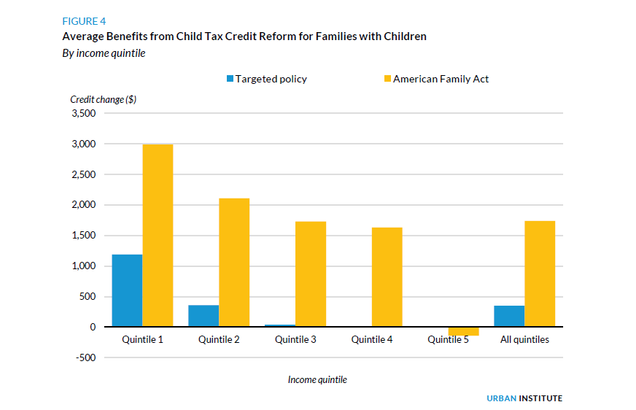
Policy analysts predict the AFA would have powerful and lasting effects on reducing childhood poverty. A report by the Columbia Population Research Center found the AFA would reduce child poverty by 38 percent, and the duel-impact of increasing the credit and eliminating the earnings requirement would move approximately 4 million children out of poverty and 1.6 million out of deep poverty. In 2015 Congress—in a bipartisan action—commissioned a group of experts to produce “a nonpartisan, evidence-based report that would provide its assessment of the most effective means for reducing child poverty by half in the next 10 years.” The report found the most impactful programs involve cash assistance to families, and noted the most effective policy for poverty reduction would be a $2,700 unrestricted child allowance, which the authors report, would alone cut child poverty by a third. Cash subsidies to low income families are also credited for increasing investment in early child development, which links to better learning outcomes and future earning potential. Thus, the AFA implements evidence-based policy for combatting child poverty and promoting broader social and economic benefits for its beneficiaries.
While much of these same benefits could be realized in other progressive policies (such as Universal Basic Income and Universal Childcare), theses government programs require strong Democratic congressional majorities. A closer examination of the political landscape surrounding tax credits and unpaid domestic labor reveals the critical ways the AFA’s form and function can attract Republican support.
To understand the bipartisan potential, we must discuss why many conservatives traditionally support the CTC. Structured fundamentally as a tax credit, the CTC can be framed as a reduction of the federal government. The CTC is more palatable than other anti-poverty initiatives because it bypasses the need for a government program with an expansive bureaucratic administration and a redistributive tax for funding. While this framework is somewhat undermined by the (partially and conditionally) refundable nature, still the CTC addresses the widely supported issue of reducing childhood poverty through an initiative that shrinks the size of the federal government by taking in less tax revenue and not offering a new administrative service. Bennet’s description of the plan demonstrates his awareness of this political tightrope. In the AFA announcement he described it as a tax cut and credit, not a benefit or allowance. When questioned on his word choice he told reporters “I think you could describe it either way.”
Republicans can also frame the CTC and the AFA expansion as pro-family. Conservatives often decry the traditional family structure is under assault and argue programs like the childcare tax credit and proposals like universal childcare structurally nudge stay-at-home parents into the workforce by discounting their unpaid domestic labor. The AFA expansion gives parity in treatment of working and stay-at-home parents. The AFA’s significant credit increase could be framed as offering a simplified and neutrally applied childcare subsidy in lieu of other universal childcare proposals, which commentators on both sides of the debate have described as disadvantaging stay-at-home parents. The Niskanen Center, a center-right think tank, supports expanding the CTC in much the same way the AFA does. It argues the increased credit should unite the left and right through its anti-poverty, pro-family message and impact. It asserts that neutral funds promote individual choice by giving parents the decision-making power to use funds to “help pay for child care for two-parent working families, or help a stay-at-home parent or a grandparent afford necessities such as diapers, transportation, access to the Internet, or educational materials for a child.” The Niskanen Center is not alone on the political right. During his campaign, Donald Trump’s Childcare Plan included a neutrally applied childcare deduction, “offering compensation for the job [stay-at-home parents are] already doing, and allowing them to choose the child care scenario that’s in their best interest.” Further demonstrating the bipartisan nature of the fundamental concept and policy, Trump’s December 2017 tax plan expanded the annual CTC credit from $1000-$2000 dollars and modestly lowered the taxable income requirement.
The AFA should pass because it is good data-backed policy, but unfortunately that is not enough. It is the policy’s structure rooted in the tax code, implications supporting stay-at-home-parents, and foundation in a popular bipartisan program that give the AFA an opportunity transcend partisan gridlock and pass through congress.
 Rebecca Gottesdiener anticipates graduating from Boston University School of Law in May 2020.
Rebecca Gottesdiener anticipates graduating from Boston University School of Law in May 2020.
Dying for a Greener Tomorrow: Legalizing Alkaline Hydrolysis
From the first intentional Neanderthal burials to Polish vampire burials and Himalayan sky burials, burial practices have long been and continue to be a large part of our cultural understanding of death and the afterlife. Today’s growing concerns with land and natural resource sustainability as well as global climate change, people look towards ways to slash their carbon footprints upon death. One emerging alternative to traditional cremation is alkaline hydrolysis (also known as resomation and biocremation).
Greater than half of the US population choose conventional modern burials upon death, which includes being filled with embalming fluid, a known carcinogen, being placed into a casket composed of imported tropical hardwoods, and buried inside a concrete-lined grave. In total, conventional burials account for “4.3 million gallons embalming fluid, 827,060 gallons of which is formaldehyde, methanol, benzene, 20 million board feet of hardwoods, including rainforest woods, 1.6 million tons of concrete, 17,000 tons of copper and bronze, 64,500 tons of steel, and [c]askets and vaults leaching iron, copper, lead, zinc, cobalt” yearly in the US. The wood alone could potentially build millions of homes. Moreover, cemetery landscapers often overwater and over fertilize these spaces to keep their green appearance. On top of these environmental effects, America is running out of space for the deceased, particularly urban centers which cannot keep pace with population growth. All of this accounts for 230 pounds of carbon footprint per traditional burial, equivalent to the average American’s three month carbon output.
 Figure 1. Alexandra Harker, through the Berkeley Planning Journal, illustrated the resource intensity of conventional modern burials.
Figure 1. Alexandra Harker, through the Berkeley Planning Journal, illustrated the resource intensity of conventional modern burials.
Traditional flame-based cremations, often thought of as a greener alternative, “uses 92 cubic [meters] of natural gas, releases 0.8 to 5.9 grams of mercury, and is equal to an [500 mile] car trip.” Interestingly enough, mercury dental fillings are one of the greatest concerns attributed to cremation. According to the Cremation Association of North America (CANA), “primary reasons for choosing cremation are; to save money (30%); because it is simpler, less emotional and more convenient (14%); and to save land (13%).” “The most recent figures from 2003 show that the U.S. cremation rate was 28% (700,000 cremations). Based upon increases in acceptance over the past five-year average, the . . . (CANA) has forecast a national cremation rate of 43% by 2025 with over 1.4 million cremations taking place.” Thus, finding a cost-efficient alternative might be the nation’s best bet towards a greener alternative to traditional burial and cremation practices.
Alkaline hydrolysis reduces human remains down to bone fragments, just like the flame-based equivalent, but does so through a water-based dissolution. CANA first defined alkaline hydrolysis in 2010 as “a water-based dissolution process which uses alkaline chemicals, heat, agitation, and pressure to accelerate natural decomposition.” The removal and storage process are similar in both cremation processes, but alkaline hydrolysis provides the added benefit of allowing pacemakers and other implants in place throughout the water-based dissolution unless required by state law. However, the process of reducing the human remains through cremation is distinctly different between the two processes.
“Alkaline hydrolysis uses water, alkaline chemicals, heat, and sometimes pressure and agitation, to accelerate natural decomposition, leaving bone fragments and a neutral liquid called effluent. The decomposition that occurs in alkaline hydrolysis is the same as that which occurs during burial, just sped up dramatically by the chemicals. The effluent is sterile, and contains salts, sugars, amino acids and peptides. There is no tissue and no DNA left after the process completes. This effluent is discharged with all other wastewater, and is a welcome addition to the water systems.”
The process requires unique equipment and training, but the end result is a reduced carbon footprint. After the three to thirteen hour process of moderate heat, pressure, and agitation, the by-products are released in the water as opposed to traditional cremation which releases carbon dioxide and water vapor into the air. The water-soluble by-products include salts and amino acids, which the CANA suggests is “far cleaner than most wastewater.”
“The sterile liquid is released via a drain to the local wastewater treatment authority in accordance with federal, state or provincial, and local laws. The pH of the water is brought up to at least 11 before it is discharged. Because of the contents of the effluent, water treatment authorities generally like having the water come into the system because it helps clean the water as it flows back to the treatment plant. In some cases, the water is diverted and used for fertilizer because of the potassium and sodium content.”
 Figure 2. CANA’s Board of Directors expanded the definition of cremation to include alkaline hydrolysis, mainly because the process and results were similar to traditional flame-based cremation.
Figure 2. CANA’s Board of Directors expanded the definition of cremation to include alkaline hydrolysis, mainly because the process and results were similar to traditional flame-based cremation.
First introduced in 1888 by the farming industry for creating fertilizers from farm animal remains, the process first hit the funerary market in 2011. Today, there are twenty states and three Canadian provinces legalizing the process through legislation. Using U.S. Census Bureau July 2018 data, the twenty states’ population totals over 151.5 million citizens, which accounts for 46.3 percent of the American population. Regardless of the legalization of alkaline hydrolysis, access is today’s constraint. The legalization of the process is the first step towards the wide-spread use of alkaline hydrolysis. Once the processes are available, the price point is in line with traditional cremation services. Anderson-McQueen Funeral Homes lists the transportation, handling, and other fees associated with both cremation processes at approximately $3,000.
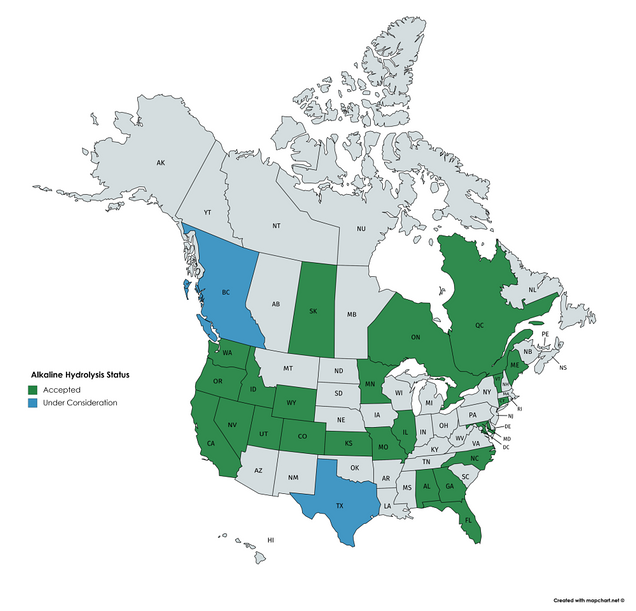 Figure 3. CANA keeps an up-to-date map reflecting alkaline hydrolysis regulatory changes.
Figure 3. CANA keeps an up-to-date map reflecting alkaline hydrolysis regulatory changes.
Once the wide-spread legalization of the process occurs, the public will likely push for greater access to greener cremation practices. It will be interesting to see if and when the process begins in Massachusetts and the remaining 30 states. In any case, the science shows that the massive carbon footprint that traditional burials and cremation services causes.
Tyler Heneghan anticipates graduating from Boston University School of Law in May 2021.
Raise the Age: An Evidence-Based Approach to Juvenile Justice Reform
For a large portion of America’s youth, the 1990s marked the end of juvenile justice. Blinded by fear and captivated by rumors of a “superpredator” uprising, legislatures across the country decided to “Get Tough” on crime. This meant decreasing rehabilitation efforts, increasing punitive repercussions and transferring increasing numbers of youth to adult criminal courts and adult correctional facilities. In effect, “Get Tough” legislation has lowered the legal age of criminal responsibility.
Just under 15,000 individuals under the age of 18 were held in adult jails and state prisons during the 1990s. As crime rates decreased and the “superpredator” hysteria waned, that number decreased sharply, but there are still upwards of 4,000 juveniles being held in adult jails and prisons as of 2018. As well, Emerging Adults, individuals 18–25 years of age, are held responsibility for a disproportionate amount of criminal activity in the United States. Making up only 10% of the total population, Emerging Adults account for almost 30% of criminal arrests and 21% of the adult prison population.
There is little dispute that America’s youth is being held legally responsible for a disturbing amount of crime. The question facing legislatures today is to what extent are these individuals actually culpable for their crimes and whether the adult justice system is the appropriate forum for addressing that culpability.
“Get Tough” Approach
The “Get Tough” movement was largely founded on the premise of the now debunked theory of the “superpredator” promulgated by social and political scientists in the early 1990s. In 1996, Princeton Professor and Criminologist John J. DiIulio Jr. co-authored a book on “the war on crime and drugs”, writing:
[A] new generation of street criminals is upon us -- the youngest, biggest and baddest generation any society has ever known.
America is now home to thickening ranks of juvenile 'superpredators' -- radically impulsive, brutally remorseless youngsters, including ever more preteenage boys, who murder, assault, rape, rob, burglarize, deal deadly drugs, join gun-toting gangs and create serious communal disorders.'
Given that “[the] superpredator is a young juvenile criminal who is so impulsive, so remorseless, that he can kill, rape, maim, without giving it a second thought,” the logical solution to the impending “hordes of depraved teenagers” was imprisonment. Juveniles without a conscience were considered incapable of rehabilitation, and lawmakers were pushed to focus on the punishment and prevention of youth crime.
Scientific & Constitutional Review of “Get Tough”
Support for increased and prolonged incarceration relies heavily on the theory that severe punishment will deter crime. The threat of incarceration is thought to deter the general public from acting reckless or dangerous, while punishment “chastens” the individual to deter future criminal behavior. But both general deterrence and the “chastening effect” fall short of achieving their goals.
General Deterrence
In 2005, the Supreme Court began crediting scientific advances in adolescent neuro-psychology and proscribed the use of capital punishment and mandatory life without parole sentences for juveniles. In Roper v. Simmons, Justice Kennedy opined:
[A] lack of maturity and an underdeveloped sense of responsibility are found in youth more often than in adults and are more understandable among the young. These qualities often result in impetuous and ill-considered actions and decision
Once the diminished culpability of juveniles is recognized, it is evident that the penological justifications for the death penalty apply to them with lesser force than to adults. We have held there are two distinct social purposes served by the death penalty: “ ‘retribution and deterrence of capital crimes by prospective offenders.’ ” Atkins, 536 U. S., at 319 (quoting Gregg v. Georgia, 428 U. S. 153, 183 (1976)
[T]he absence of evidence of deterrent effect is of special concern because the same characteristics that render juveniles less culpable than adults suggest as well that juveniles will be less susceptible to deterrence. In particular, as the plurality observed in Thompson, “[t]he likelihood that the teenage offender has made the kind of cost-benefit analysis that attaches any weight to the possibility of execution is so remote as to be virtually nonexistent.” 487 U. S., at 837.
For general deterrence to be effective, a juvenile must be capable of rationally assessing their actions before they act. As Justice Kennedy noted when he declared juveniles ineligible for the death penalty, juveniles act impulsively and irrationally. Therefore, the threat of prosecution in criminal court is unlikely to deter juveniles from criminal action.
The Chastening Effect
The chastening effect follows the age-old notion that punishment teaches a lesson. The idea that delinquent youth must be taught a lesson was abundant during the “superpredator” scare of the 1990s. The problem is, the evidence does not support that theory. In fact, the evidence suggests the contrary. Youth in the adult criminal justice system are more likely to re-offend upon release.
A Juvenile Recidivism Study in Vermont that compared 16 and 17 year old offenders charged with similar offenses in the juvenile and adult courts. The study found “[t]he three-year recidivism rate for juveniles adjudicated in the Family Division was 25%, compared to a 47% three-year recidivism rate for juveniles convicted in the Criminal Division.” Recidivism can often be attributed to higher levels of isolation and victimization experienced by you in adult correctional facilities, as well as the criminal culture perpetuated by other inmates.
Furthermore, recent studies have found that “the criminal justice system — and the accompanying violence, stress and isolation [ ] that come with being incarcerated — can interfere with brain development in adolescents and children.” A Harvard study on emerging adults concluded:
Higher recidivism rates among emerging adults are not surprising. Justice-involved emerging adults have been victims of violent crime and have experienced emotional and physical trauma at a higher rate than any other population. Exposure to toxic environments such as adult jails and prisons further traumatizes justice involved emerging adults, making them more vulnerable to negative influence, and as a result, increases recidivism among this group. Tailoring the justice system’s response to emerging adults’ developmental needs can reverse this cycle of crime and improve public safety.
“Diminished Culpability”
The Supreme Court has established precedent for amending existing law to meet the “evolving standards of decency,” and decency requires legislatures to re-evaluate the age of criminal responsibility.
The Brain
Much of the research cited by the Supreme Court back in the early 2000s found that those traits the Court ruled “diminished culpability” are present even in late adolescence (age 17, 18, and 19). However, as of January 11, 2019, 17 states still prosecute adolescence age 17, 18, and 19 as adults. An additional 5 states allow the prosecution of juveniles as young as 16 in adult court.
Recent advances in developmental brain science has shown that the human brain is still developing well in to their 20s. The well established consensus in the scientific community is that the brain functioning of a juvenile is not comparable to that of an adults until at least age 25. Particularly relevant to diminished culpability is the continuing development of the prefrontal lobe. The prefrontal lobe is responsible for executive functions such as risk assessment, planning, self-evaluation, goal-setting, and the regulation of our emotions.
Emerging Adults
Psychologist Jeffrey Arnett coined the term “Emerging Adult” in 2000. In the context of criminal justice, emerging adults refers to individuals having attained 18 years of age up to 25 years of age. This age group should be especially important to legislatures because emerging adults have higher rates of incarceration and recidivism. A national study of 30 states revealed that approximately 78% percent of emerging adults released in 2005 were re-arrested within 3 years. Whereas approximately 73% percent of those 25 to 29 and 63% percent of those 40 and older were rearrested within 3 years of release. The study found the pattern held true 5 years after release, and under 30% of those new arrests were violent.
Higher recidivism rates among emerging adults can be attributed Justice-involved emerging adults have been victims of violent crime and have experienced emotional and physical trauma at a higher rate than any other population. Exposure to toxic environments such as adult jails and prisons further traumatizes justiceinvolved emerging adults, making them more vulnerable to negative influence, and as a result, increases recidivism among this group. Tailoring the justice system’s response to emerging adults’ developmental needs can reverse this cycle of crime and improve public safety. Conversely, when emerging adults are provided with age-appropriate programing, the recidivism rate drops dramatically.
Moreover, a large portion of offenders, even violent offenders, age-out of crime. On average, property crimes peak at age 16 and violent crimes at age 17. According to a Justice Policy Institute report,
The evidence is clear that most young people will desist from criminal behavior without intensive justice-system involvement. By better addressing the unique needs and behavior of young adults, justice systems can develop responses that limit the risk youth pose to themselves and others during this transitory life stage.
Raise the Age
The “Raise the Age” campaign advocates for legislation that raises the maximum age of juvenile jurisdiction. Raising that age allows more developmentally underdeveloped individuals to be tried in a juvenile or family court. These courts are considerably more focused on education and rehabilitation that adult criminal courts.
In 2013, Massachusetts raised the age from 17 to 18, and juvenile crime has declined by 34%. Also on the decline in Massachusetts is the number of youth in juvenile facilities. Massachusetts success in raising the age can be attributed to “improving community-based responses and using cost-effective and developmentally appropriate approaches.”
Most states now include 17-year-olds in juvenile jurisdiction, but only one state – Vermont – has raised the age above 18 in conformance with advances in developmental studies of the brain.
Modern science tells us that emerging adults take more risks, have less self-control and are less culpable of their crimes. An evidence-based approach to legislation would demand a re-evaluation of emerging adults in the criminal justice system and the enactment of age-appropriate reforms.
 Melissa Mayfield anticipates graduating from Boston University School of Law in May 2021.
Melissa Mayfield anticipates graduating from Boston University School of Law in May 2021.
Sanctuaries With Guns? Turning The Rule Of Law Upside Down; by Delegate David Toscano (D-Charlottesville)
The Tazewell County, Virginia, Board of Supervisors recently jumped aboard the fast-moving “Second Amendment sanctuaries” train. In doing so, they embraced positions fundamentally at odds with state and federal constitutional law. Passing resolutions opposing certain laws or protesting governmental action is perfectly consistent with our traditions as a democracy, and no one should oppose the rights of citizens and their representatives to speak their minds. But Tazewell, and a number of other localities across Virginia, want to do much more. As Eric Young, an attorney and the county’s Administrator, put it, “our position is that Article I, Section 13, of the Constitution of Virginia reserves the right to ‘order’ militia to the localities; counties, not the state, determine what types of arms may be carried in their territory and by whom. So, we are ‘ordering’ the militia by making sure everyone can own a weapon." Other counties are announcing different schemes if gun safety laws are enacted: for example, the Culpeper County sheriff pledged to deputize “thousands of citizens” so they can own firearms.
Conservatives have railed for years against so-called “sanctuary jurisdictions,” criticizing localities that refuse to cooperate with federal immigration policies they deem heartless and ineffective. In the past year, however, some conservative lawmakers have taken a page from the progressive playbook, employing sanctuary imagery in opposition to gun safety legislation they deem to be an unconstitutional restriction of their rights under the Second Amendment.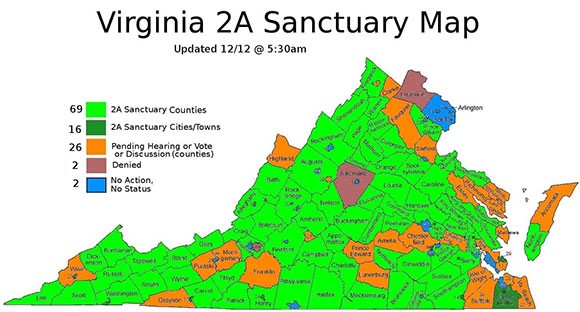
The two approaches are classic cases of false equivalency. Jurisdictions that proclaim themselves sanctuaries for immigrants do not seek to violate the law; they simply refuse to engage local law enforcement in supporting actions that are federal responsibilities. They do not block the law, but simply insist that it should be enforced by those who have the responsibility to do so. For some proponents of so-called gun sanctuaries, however, the goal is to prevent enforcement of state law that the jurisdiction (not a court) deems unconstitutional.
After Democrats won majorities in both chambers of the Virginia General Assembly, fears of stricter gun regulations have inspired a rise in Second Amendment sanctuary activity in Virginia. Sanctuary efforts are driven mainly by the Virginia Citizens Defense League, a gun rights group to the right of the NRA. My office’s analysis of recent news accounts indicates that before November 5, just one county had passed a resolution; since the election, at least 80 localities (counties, cities, or towns) have passed some form of sanctuary resolution, and as many as 34 more are considering their adoption.
A REBELLION EMERGES
Second Amendment sanctuaries exploded onto the national scene in early 2019 after newly-elected Democratic Gov. J.B. Pritzker pledged to pass gun safety measures in Illinois. Within months, 64 of the state’s 102 counties passed sanctuary resolutions. After New Mexico expanded background checks in 2019, 30 of 33 counties declared themselves Second Amendment sanctuaries. Similar actions have either been taken or are under consideration in Colorado, Oregon, Washington state, and now Virginia.
In some cases, these resolutions simply register an objection to any infringement on gun owners’ rights. But some Virginia localities have gone further, indicating that they will not enforce state law that they deem unconstitutional. Some proponents have even resurrected words like “nullification” and “interposition,” terms first used extensively by Southern secessionists prior to the Civil War, and more recently during the “massive resistance” to federal laws requiring desegregation in the 1960s. They argue that constitutional officers in Virginia, such as Commonwealth’s Attorneys and Sheriffs, have discretion not to enforce laws that they consider “unconstitutional.” In Virginia, there has always existed some debate about the independence of these officers, but, while they are creations of the Constitution, their duties are nonetheless "prescribed by general law or special act.” In short, sheriffs may be “constitutional officers,” but they are not “constitutional interpreters.”
FLASHPOINTS IN THE CULTURE WARS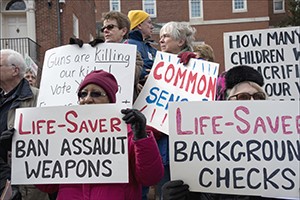
The emergence of these sanctuaries demonstrates a growing rift in our nation. For residents in many rural areas of our country, guns are viewed as part of their way of life, one some fear that they will lose due to national and state changes. Most gun owners are law-abiding citizens, and any effort to limit anyone's access to firearms is perceived as a direct attack on many things that they hold dear. During the Obama years, the manufacture and purchase of firearms increased in dramatic numbers in part due to unfounded fears that the government would try to take away guns. Voting to declare themselves “sanctuaries” is a way they can reassert some control over events that they feel are putting them at risk. For these communities, it matters little that reasonable gun safety proposals have largely passed constitutional muster, or that most proponents of these measures have no intention of taking anyone’s guns away unless it can be shown, in a court of law, that they are a danger to themselves or others.
At the same time, the general public is increasingly supportive of certain gun safety measures. An April 2018 poll found that 85 percent of registered voters support laws that would "allow the police to take guns away from people who have been found by a judge to be a danger to themselves or others" (71 percent "strongly supported"). These measures, called Emergency Risk Protection Orders (ERPO), or “red flag” laws, create judicial procedures by which persons with serious mental health challenges deemed a threat to themselves or others can have their weapons removed until their situation is resolved; courts can be engaged to protect the rights of the accused. And a March 2019 Quinnipiac poll reported that 93 percent of American voters support a bill that would require “background checks for all gun buyers.”
The energy behind support of gun measures like "red flag" laws is generated by concern for mass shootings, which are statistically rare but dramatic in their public impact, and the increasing numbers of gun-related suicides, which impact families and communities in quiet but devastating ways. On the latter front, there is a certain irony that some communities which have embraced Second Amendment sanctuary status also have higher gun suicide rates than other communities in their state. In Colorado, for example, nine of the 10 counties with the highest suicide rate over the past 10 years have declared themselves “Second Amendment sanctuaries,” many after the state passed an ERPO law in 2019. Of the 24 Colorado sanctuary counties for which suicide data is available, 22 (or 92 percent) had firearm suicide rates above the state average. Similarly, in Virginia, 36 of the 51 localities that have adopted a resolution to date and for which firearm suicide data is available have rates higher than the state median.
Recent polling in Virginia tells us that citizens of the Commonwealth are in step with the national trends documented above: Roanoke College’s Institute for Public Opinion Research recently released polling results which show that 84 percent of respondents favor universal background checks, and 74 percent support allowing a family member to seek an ERPO from a court. Yet in the very same pool of respondents, 47 percent believe it is more important to protect the right to own guns than to control gun ownership. The only way to make the math add up is to recognize that some people who strongly support Second Amendment rights may also support at least some reasonable gun safety measures—an approach the “sanctuary” advocates would never adopt. But even former Supreme Court Justice Antonin Scalia might have had problems with some of the arguments being advanced by proponents of sanctuaries. “Like most rights,” he wrote in District of Columbia et. al. v. Heller, “the right secured by the Second Amendment is not unlimited. From Blackstone through the 19th-century cases, commentators and courts routinely explained that the right was not a right to keep and carry any weapon whatsoever in any manner whatsoever and for whatever purpose." In short, rights under the Second Amendment have never been absolute. And under both the national and state Constitutions, our courts are tasked with determining the constitutionality of laws—not local sheriffs.
HOME RULE VS. DILLON RULE
Proponents of Second Amendment sanctuaries have another problem in Virginia; the Commonwealth is what we call a “Dillon Rule” state. This means that if a power is not specifically permitted to a locality, state law rules. Progressives have been especially critical of Dillon Rule arguments in years past, believing that they have prevented localities from enacting policies—from local minimum wage ordinances to gun prohibitions—that seek to go further from state law. They have rarely been concerned that more conservative localities, if granted greater “home rule,” might enact policies, such as environmental regulations or building codes, that are more lax than state law. The Second Amendment sanctuary rebellion may prompt some to reexamine their views about how much additional power should be granted to localities.
The Virginia state legislature will soon consider several major gun safety measures, and opponents will likely strongly resist; as one county supervisor has said, “[W]e need to show them a crowd like they have never seen. They need to be afraid and they should be afraid.” Legislators should always be attuned to any unintended consequences of the laws that they pass; that is one reason why we have a deliberative process before bills are passed. But to leave the determination of whether to enforce duly-passed laws totally in the hands of sheriffs and local officials with discretionary power to determine their constitutionality is to turn the rule of law upside down, and is a direct attack on republican government and the Constitution itself.
David Toscano has represented the 57th district in the Virginia House of Delegates since 2006, and from 20011-2019 Del. Toscano served as the House's Democratic Leader. His forthcoming book is titled, In the Room at the Time: Politics, Personalities, and Policies in Virginia and the Nation.
A modified version of this opinion piece appeared on Slate.com.
Blanket Primaries or Ranked-Choice? Why Not Both?
A substantial number of Americans continue to voice dissatisfaction with current American electoral practices. This has put Justice Brandeis’s laboratories of democracy to work by prompting some states to exercise their powers to design election systems to experiment with various electoral reforms. Those powers derive from the state constitutions for elections of state officers; Article I, Section 4 of the U.S. Constitution to “[prescribe] the Manner of holding Elections for Senators and Representatives”, and the U.S. Constitution Article II, Section 1 to determine how electors for President may be chosen.
Many states have allowed their municipalities to experiment, with a few states adopting reforms on a state-wide level. In the latter category, some states, like California and Washington, have adopted what is sometimes described as the top-two, blanket, or Louisiana primary, while Maine has implemented ranked-choice voting. While these reforms have been innovative, study of their effects reveals limited success in achieving advocates’ promises. This post concludes that by combining both reforms, states will be better positioned to access the positive outcomes hoped for.
Blanket Primaries
Former Republican congressman from Oklahoma, Mickey Edwards, has argued that the problem with American politics is our 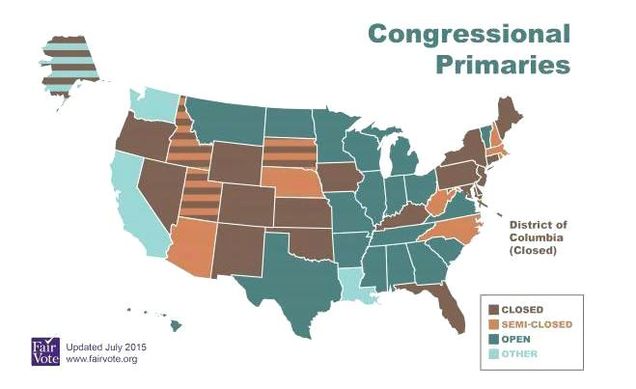 broken election system that rewards partisanship at the expense of good policy. Edwards argues that the culprit is the primary. Primary election turnout is notoriously low, with a recent Pew Research Center study celebrating a surge in participation in the 2018 House primary elections of 56% - a surge that still left turnout in that primary under 20%. The belief is that since political participation in primaries is so low, they are dominated by the most active, and most partisan, members of the parties, limiting the success of more centrist candidates, who are presumably more representative of their districts. In particularly politically active years, incumbents are at risk of being “primaried” by extremists in their party. Thus, the candidates in the general election tend to be more extreme, on both ends, than the district, and the eventual winner is then likely to represent only one extreme, rather than the district as a whole.
broken election system that rewards partisanship at the expense of good policy. Edwards argues that the culprit is the primary. Primary election turnout is notoriously low, with a recent Pew Research Center study celebrating a surge in participation in the 2018 House primary elections of 56% - a surge that still left turnout in that primary under 20%. The belief is that since political participation in primaries is so low, they are dominated by the most active, and most partisan, members of the parties, limiting the success of more centrist candidates, who are presumably more representative of their districts. In particularly politically active years, incumbents are at risk of being “primaried” by extremists in their party. Thus, the candidates in the general election tend to be more extreme, on both ends, than the district, and the eventual winner is then likely to represent only one extreme, rather than the district as a whole.
To address this concern, Edwards advocates for a reform known as “blanket” primaries, sometimes referred to as “Louisiana,” “jungle,” or, most accurately, “top two” primaries. This reform provides that in the primary election, there is a single ballot, with all candidates on the ballot regardless of party. The top-two candidates who receive the most votes then move on to the general election. This means that the candidates in the general election may both be from the same party, particularly in districts whose residents heavily identify with one party over the other. This may make for more competitive general elections, in that a candidate who is almost certain not to win isn’t on the ballot, in favor of a candidate who actually has a chance of convincing voters to vote for them. Also, along with Edwards’s hope that this will reduce partisanship by ensuring the candidates in the general election better represent the center of the district, advocates have also claimed that it will increase turnout.
Unfortunately, the data provides only marginal support for the proposition that blanket primaries reduce partisanship and increase turnout. An added challenge to blanket primaries is that because only the top-two move on, it is subject to vote splitting – if too many candidates from a party enter the race, they may end up without any candidates in the general simply by virtue of the number of candidates in the race, rather than voter preferences. Thus, blanket primaries are not a panacea, at least on their own, for electing more representative representatives.
Ranked-Choice Voting
Maine has moved in a different direction, adopting ranked-choice voting (“RCV”), a darling of electoral reform advocates for decades. RCV has a long pedigree, first having been promoted publicly in the United States by William Robert Ware in the 1870s. Some states and municipalities flirted with a version of RCV, known as single transferable vote, in the last great shift in party power during the early- to mid-twentieth century. RCV and similar systems have also been successfully used internationally – including in Australia, and Ireland.
While there are many different iterations of ranked-choice voting, Maine has adopted the most typical approach. There, voters may rank candidates first, second, third, and so on. If a candidate gets a majority of first-rank votes, they are declared the winner. However, if no candidate receives a majority of votes, then the candidate with the least number of votes is eliminated, and the voters who ranked that candidate first have their votes redistributed to their second-rank candidates. If no candidate has a majority, the new candidate with the lowest number of votes is eliminated, and their voters’ ballots are also redistributed. The system continues until a candidate has secured a majority of preferences.
Advocates of ranked-choice have also claimed that the system reduces partisanship, since candidates are encouraged to appeal to voters to rank them second, even if they can’t secure their first preference. Advocates also argue that it increases turnout by
making the ballot more reflective of voters’ wishes. As with blanket primaries, however, there is only modest statistical data showing that the turnout hopes are borne out.
A Proposal
States should consider merging the two systems, blanket primaries and RCV, in order to best access the benefits of each. The real problem that neither system effectively can address is the issue of turnout. Primary elections typically draw the most politically aware sector of the electorate that is most invested in who the candidates in the general election are, but turnout remains exceedingly low regardless of the system. Blanket primaries attempt to appeal to an electorate disenchanted by the current partisan model and looking to elect “the best candidate,” but since they continue to rely on a two-stage electoral model, they don’t resolve the fundamental problem. The most partisan members of the electorate participate in the blanket primary, and turnout surges, as it always does, in the general, after the partisans have already selected who will be on the ticket. Combining ranked-choice with the blanket primary would allow there to be a single election, ensuring the highest number of voters considering all the available candidates, not just those the partisans have already selected. Moving to a single election, with candidates on a single ballot regardless of party, and using RCV would ensure that the larger electorate would be able to weigh-in, allow them to rank their preferences, and ensure that the candidate who emerged was the preferred candidate of a majority of voters. This will increase elected officials’ mandate, and provide more information about what direction the district would like to go in.
Slowing Chipping Away at Child Marriage in the US
Child marriage is condemned by the international community and the stated goals of the U.S. State Department. In fact, the State Department’s “U.S Global Strategy to Empower Adolescent Girls” calls marriage before 18 a “human rights abuse.” However, most states still have laws that allow for the marriage of children under the age of 18. Eighteen states don’t even have a minimum age that a child can be married. So far in the US, only two states, New Jersey and Delaware, have banned all child marriages with no exceptions. Between 2016 and 2018, eleven states have passed laws that limit child marriage but still keep some exceptions, mainly relating to parental consent and 16 or 17-year-olds marrying someone within a few years of their own age. Ten additional states have introduced bills curtailing child marriage, many of which were sent to study or died at the end of the legislative session in 2018, but with plans to be reintroduced in the next session.
The advocacy organizations leading the charge for new protections for minors are insistent that only a limit of 18 years old with no exceptions is good enough; especially since some of the legal exceptions exacerbate the problem. For example, requiring only parental consent, especially when only a single parent’s consent is needed for marriage under the age of 18 leaves minors unprotected from marriage due to coercion. A few states still allow for exceptions when the girl is pregnant, even if she is below the age of consent. Pregnancy, of course, is one of the situations where girls are most often coerced into marrying men, some of whom are their rapists.
Earlier this month, Ohio joined the ranks of states attempting to fix this problem, if imperfectly. House Bill 511 was introduced by
Republican Rep. Laura Lanese and Democratic Rep. John Rogers last year with the intention of updating the former law, which treated boys and girls differently. Previously, girls could get married at 16 with parental consent, although boys could not get married below the age of 18 without the consent of a juvenile court.
The new law, which was signed by Governor John Kasich just before he left office in January, creates gender equality by requiring both boys and girls to be 18 in order to get married. The only exemption allowed is a marriage at 17 if there is no more than a four-year age difference, if a juvenile court consents and requires a 14 day waiting period. In the processes of determining whether to give consent, the court is instructed to consult with the parent or guardian, and appoint a guardian ad litem. Additionally, a court must determine if the minor is in the armed forces, employed and self-subsisting or otherwise independent of a parent or guardian, and if the minor is free from force or coercion in the decision to marry. The couple must also have completed marriage counseling satisfactory to the court. Additionally, a provision was added that requires official proof of age.
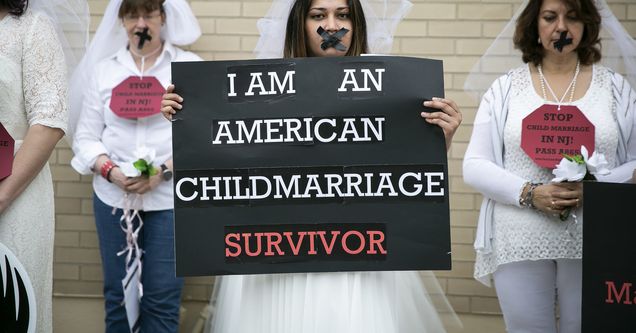 There were strong reasons for the Ohio Legislature to act. According to the Dayton Daily News, over 4,400 girls aged 17 or younger were married in Ohio between 2000 and 2015. Of those, 59 were 15 or younger, and three were 14 years old. Additionally, according to the Ohio Department of Health, there were 302 boys under the age of 17 were married between 2000 and 2015, with the approval of parents or a juvenile court. A significant driver of the child marriages seems to be when a minor girl gets pregnant by an older man.
There were strong reasons for the Ohio Legislature to act. According to the Dayton Daily News, over 4,400 girls aged 17 or younger were married in Ohio between 2000 and 2015. Of those, 59 were 15 or younger, and three were 14 years old. Additionally, according to the Ohio Department of Health, there were 302 boys under the age of 17 were married between 2000 and 2015, with the approval of parents or a juvenile court. A significant driver of the child marriages seems to be when a minor girl gets pregnant by an older man.
These types of marriages have harsh consequences including being 50% more likely to drop out of high school, three times more likely to experience psychiatric disorders, and divorce rates of almost 80%, which can more than double the chance a teen mother ends up in poverty. Additionally, women who marry as minors lack the ability and resources to remove themselves from a harmful relationship. For example, most domestic-violence shelters cannot accept minors, minors who leave home are considered runaways, and child-protective services can usually do little in regards to legal marriages. Furthermore, a child is unlikely to have the resources to escape an abusive relationship, pay attorney fees, or even sign any other legally binding document.
In Massachusetts, there is currently no age requirement for marriage, with minors requiring a half page petition, and approval by parents and the courts. The statistics for child marriages in Massachusetts consist of 1,200 children as young as 14 married from 2000 to 2016. In the time period from 2005 to 2016, 89% were underage females married to adult men. In 2018, Democratic Sen. Harriet Chandler and Democratic Rep. Kay Khan introduced bills (S785/H2310) to end all child marriage with no exceptions. The bill stalled, however, because as Democratic Rep. Khan noted because legislators were not been able to hear from victims who want to talk about their experience. The bill was refiled at the beginning of the new legislative session that began in January.
Slowly, but surely, states are addressing the evils that come with child marriage.
 Amanda Simile will graduate from Boston University School of Law in May 2020.
Amanda Simile will graduate from Boston University School of Law in May 2020.
Stop the Clock: Implications of Switching Time Zones
The holiday season is joyous for many reasons; from family, friends, and food, there is ample joy and merriment to go around. There is one aspect of the season that doesn’t match these factors; especially in New England – darkness. At the outset of winter, on December 21st each year, the sun sets in Boston at 4:11pm. There are many negative effects of darkness setting in before the end of the workday – with increased crime, traffic accidents, and seasonal depression being one of the most paramount. Boston’s sunset is not the earliest in the area, with municipalities in Maine experiencing sunsets earlier than 4pm; but it is the earliest of the major cities, beating out Buffalo, NY despite being further south.
Early sunsets do not become apparent in New England until clocks fall back in line with the change from Daylight Savings Time. Daylight Savings is a federal program instituted during World War II that the country has become accustomed to; the federal legislation only permits states to opt out of the program, but it does not allow states to make the program permanent, which would keep the clocks from falling back an hour. Hawaii and Arizona have opted out of the program – made available through the US Energy Policy Act of 2005, allowing any state that lies entirely within one time zone to opt out.
New England states, primarily Massachusetts and Maine at this point, have been considering a change to the Atlantic Time Zone
in order to increase the number of waking hours with sunlight. With a change to Atlantic Time, and subsequent opting out daylight savings, New England would be out of sync with the rest of the Eastern Time Zone from November to March, or the period in which clocks “fall back” in line with daylight savings in the Eastern Time Zone. A transfer to Atlantic Standard Time – which includes Puerto Rico, the Virgin Islands and eastern Canada – would mean jumping an hour ahead of the Eastern time zone from November to February. The time zones would align from March to October.
While the benefits of having an extended amount of light in the evening hours are readily apparent, there are several drawbacks that accompany a change. Early risers in particular, who are likely accustomed to the sun being out while they start their days have reason to complain. School aged children may be leaving to their schools in darkness in the morning, and businesses that transact on financial markets may be put out of sync with the markets they depend on.
If New England were to change to Atlantic time, there would be a two-step process. First, the interested states would have to decide to leave. Second, the states would have to consult the US Department of Transportation, the cabinet agency that regulates time zones. States, municipalities, business interests, and others would have the opportunity to weigh in during both steps.
 There could be major issues with “commerce, trade, interstate transportation and broadcasting” if one state moves ahead one hour while its neighboring states remain in the Eastern Time Zone. It seems to be a requirement of widespread support and agreement for any change in this area to take effect. Lawmakers in Maine might support the change – in May 2017, Maine’s Senate passed a bill that would move the state to the Atlantic Time Zone — if approved by residents in a state-wide referendum. Maine conditioned the change, subject to their approval, on Massachusetts and New Hampshire.
There could be major issues with “commerce, trade, interstate transportation and broadcasting” if one state moves ahead one hour while its neighboring states remain in the Eastern Time Zone. It seems to be a requirement of widespread support and agreement for any change in this area to take effect. Lawmakers in Maine might support the change – in May 2017, Maine’s Senate passed a bill that would move the state to the Atlantic Time Zone — if approved by residents in a state-wide referendum. Maine conditioned the change, subject to their approval, on Massachusetts and New Hampshire.
Some states seem to have considered the idea and decided against it, with the New Hampshire Senate voting against a bill that would move the state to the Atlantic Time Zone by a 16 to 7 vote; at the same time, the bill passed the house with a voice vote. While there has yet to be an affirmative move, the proponents of the change are enlivened by the action around the issue and are hopeful for the future.
Massachusetts established a commission to study the issue. In a neutral report neither supporting or disavowing the change, the commission stated its findings that "People tend to shop, dine out, and engage in other commercial activities more in after-work daylight,". . . "Year-round DST could also increase the state's (competitiveness) in attracting and retaining a talented workforce by mitigating the negative effects of Massachusetts' dark winters and improving quality-of-life." More daylight could also reduce street crime, on-the-job injuries and traffic fatalities, and boost overall public health, the commission found.
States in the Northeast seem intrigued by the change, but alterations of the particulars of their citizen’s days are deeply personal to their citizens may be a drastic change to take without widespread public support. In Arizona, the effects of their non-adherence to daylights savings time are apparent when the state is out of sync with the rest of the surrounding states – constant clarification of what time is in effect, setting different meeting times, etc. Results on an individual basis are a mixed bag, with businesses that are purely local and that thrive in the daylight being supporters of the longer day due to increased business, and those who constantly run up against timing differences by virtue of dealing with other regions.
It will be interesting to observe if public support for a time zone change increases as people in New England become aware that doing so is a possibility to increase their daylight hours in the depths of winter. In any case, it is clear that the states’ legislatures have identified it as a possible issue.
 Drew Kohlmeier is a student in the Boston University School of Law Class of 2020 and is a native of Manhattan, KS, graduating with a degree in Biology from Kansas State University in 2016. Drew decided on Boston for law school due to his interest in health care and life sciences, and will be practicing in the emerging companies space focused on the life sciences industry following his graduation from BU.
Drew Kohlmeier is a student in the Boston University School of Law Class of 2020 and is a native of Manhattan, KS, graduating with a degree in Biology from Kansas State University in 2016. Drew decided on Boston for law school due to his interest in health care and life sciences, and will be practicing in the emerging companies space focused on the life sciences industry following his graduation from BU.
The US House Must Start Protecting Undocumented Minors
The 2018 midterm election should be considered less of a “blue wave” and more of a call to action made by the people of the United States to their House Representatives. The Trump administration has made many an egregious decision since 2017 and the Democrats of both the House and the Senate have unable to block such decisions due to their minority status. The Democrats must use their majority status in the House to actively combat the Trump administrations treatment of Latin American and other undocumented minors in detention.
Beginning in April 2018, Trump’s “zero tolerance” immigration policy led to the separation of infants from their mother’s arms, children from their father’s reach, and siblings from their brother’s or sister’s hands. Family separation shocked the conscience of the nation and the outcry against the policy’s ramifications drove President Trump to sign an executive order “ending” family separation. Thousands of children remained in detention, separated from their parents, for months after the executive order. In June 2018, a U.S. District Court Judge issued a preliminary injunction against the government, requiring that children be returned to their parents within 30 days. Come late October, the Department of Homeland Security still had hundreds of separated children in its custody. The government’s failure to comply with the injunction filled public discourse with calls to act to free the children. Some of the parents of these children who have been deported to the countries they fled have made the soul-churning decision to leave their children in the United States because returning the children to their country of origin could mean death. Despite the alleged “end” of the family separation policy, 81 children have been separated from their families since President Trump’s executive order.
children from their father’s reach, and siblings from their brother’s or sister’s hands. Family separation shocked the conscience of the nation and the outcry against the policy’s ramifications drove President Trump to sign an executive order “ending” family separation. Thousands of children remained in detention, separated from their parents, for months after the executive order. In June 2018, a U.S. District Court Judge issued a preliminary injunction against the government, requiring that children be returned to their parents within 30 days. Come late October, the Department of Homeland Security still had hundreds of separated children in its custody. The government’s failure to comply with the injunction filled public discourse with calls to act to free the children. Some of the parents of these children who have been deported to the countries they fled have made the soul-churning decision to leave their children in the United States because returning the children to their country of origin could mean death. Despite the alleged “end” of the family separation policy, 81 children have been separated from their families since President Trump’s executive order.
Another source of turmoil within the United States’ immigration system is the lack of representation for these children. Children, who do not speak English and are as young as 3 years old, are representing themselves against the U.S. government in immigration courts. They are being led to make decisions that are not in their best interest. For example, a 5 year old girl named Helen was told to sign her name on a form that waived away her rights to a Flores bond hearing, which would have guaranteed her a hearing in front of an immigration judge in far less time than she spent at a shelter, separated from her family. While organizations like the American Civil Liberties Union, private firms, and law school institutions are providing legal services to help bring families back together, the number of children essentially being forced to represent themselves is too high.
 The psychological toll on the detained children who were reunited with their families is immeasurable. There have been documented cases of young children, unable to understand why their parents suddenly disappeared from their lives, rejecting or distrusting their parents upon reunification. Other children live in fear of being taken again and anxiously cling to their parents. In December 2018, the nation took notice of the deaths of two undocumented children, one a 7 year old girl and the other an 8 year old boy, both from Guatemala, who died from medical complications while in Border Patrol custody.
The psychological toll on the detained children who were reunited with their families is immeasurable. There have been documented cases of young children, unable to understand why their parents suddenly disappeared from their lives, rejecting or distrusting their parents upon reunification. Other children live in fear of being taken again and anxiously cling to their parents. In December 2018, the nation took notice of the deaths of two undocumented children, one a 7 year old girl and the other an 8 year old boy, both from Guatemala, who died from medical complications while in Border Patrol custody.
More and more questions are being raised in Congress about how to address the turmoil of the Trump administration’s immigration landscape. Despite increased attention on this humanitarian crisis at the border, the problem has gotten worse over the past few months. In fact, Boston University Law Professor Sarah Sherman-Stokes reports that a team of BU Law professors and students spent a week at the border in March. They used sharpie markers to write parents' contact information on their children in case they were separated. Despite this, the Trump White House seems to be now moving toward an even harder line toward migrants; complete with a purge of Homeland Security leadership.
At this point, there should be no compromise by Democrats regarding the treatment of undocumented children and their families. Now that Democrats have a deciding vote in the House, they must use that vote, the voice their constituents gave them--and especially their oversight powers--to protect the voiceless and vulnerable children in DHS custody.
This may be finally happening. On April 17th, Elijah Cummings (D-Md.), chair of the House Oversight Committee, invited the architect of Trump's immigration policy Stephen Miller to appear before the Committee:
"I am offering you an opportunity to make your case to the Committee and the American people about why you -- and presumably President Trump -- believe it is good policy for the Trump Administration to take the actions it has, including intentionally separating immigrant children from their parents at the border to deter them from coming to the United States, transferring asylum seekers to sanctuary cities as a form of illegal retribution against your political adversaries, and firing top Administration officials who refuse orders to violate the law."
Miller is scheduled to appear before the Oversight Committee on May 1.
The safety of children should not be a partisan issue, but if anyone is going to act to ensure the safety of immigrant children, it should be the newly elected House of Representatives. The House should pressure the Senate and President to abide by the United Nation’s guidelines on the humane treatment of migrant children and their families and enforce their implementation. Any derogation leaves room for more horrifying tales of assault, abuse, trauma, and deaths of innocent children who were only trying to avoid such fates in their homelands. The House should also legislate to protect the Flores rights of unaccompanied minors and require that these minors be provided with representation in front of immigration courts.
The international community has condemned President Trump’s treatment of migrants, documented and undocumented, asylum-seeking and non-asylum-seeking, on several occasions, but some of the loudest condemnations fall upon the separation of families and treatment of children. Some governments and organizations have gone so far to call the family separation policy a humanitarian crisis and illegal. Let this moment in our nation’s history not go down as a complete humanitarian failure but as a showing of what the people can do to try and rectify the mistakes made by discriminatory policymaking.
 Cassandra Castro will graduate from Boston University School of Law in 2020.
Cassandra Castro will graduate from Boston University School of Law in 2020.
Curbing Medicare Drug Costs
Prescription drug spend in the U.S. is the highest in the world. Americans pay up to three times the amount per capita of other countries. This is problematic for our growing aging population since their income becomes limited. While Medicare covers prescription drug costs, there are policy gaps that make it unaffordable. One major barrier to price controls is part D of title XVIII of the Social Security Act, in which explicitly prohibits the federal government “from negotiating directly with pharmaceutical companies to lower drug prices”. President Donald Trump proposed several policies to reduce the cost burden of prescription drugs on consumers through free-market competition approach, focusing mainly on cost transparency and promoting use of biosimilar or generic drugs. The policies are praised as a “small step in the right direction”. Yet, many Americans are dissatisfied since the proposals do not include direct Medicare negotiations with drug manufacturers. Pharmaceuticals argue that price controls would strain their investments in research and development (R&D) of new drugs. After taking a closer look, that is not fully the case. Greater price control measures can be taken, but there must be political will to support it. For now, the President’s policies are a small victory for seniors across America.
Medicare Coverage Today
Prescription drugs are covered under Medicare Part A, B, and C plans, but to a limited capacity. Part A is hospital insurance, part B is traditional medical insurance, and part C (Medicare Advantage) is like a health maintenance organization (HMO) or preferred provider organization (PPO) plan type. Only drugs administered within these respective settings are covered. Because of these limitations, the Medicare Modernization Act of 2003 was enacted, creating Medicare part D drug benefit.
Part D is an “optional” supplemental insurance that can be purchased with any of the other Medicare plans. It, however, is severely flawed. First, Congress did not commit any financing for part D, leaving costs falling on the recipient. Second, and most notoriously, is the “donut hole” coverage gap between initial enrollment and a “catastrophic coverage threshold”. The entry-point coverage limit is currently $3,750. Once this amount is reached, the patient is then responsible for fully paying for their medication until the maximum amount of the out-of-pocket (OOP) costs have been paid, or the annual time period lapsed. The OOP threshold now is $5,100, unaffordable for many seniors that suffer multiple chronic conditions.
Additionally, the plan disincentivizes patients from purchasing brand name drugs by increasing patient coinsurance payments. Provisions of the Affordable Care Act attempted to close this gap by 2020 by limiting patient payments to 25% of the gap. Under the Trump Administration, the Bipartisan Budget Act of 2018 advanced that date to 2019. Another caveat to Part D is that it is not really “optional”. If an individual fails to sign up once qualified and decides to enroll later, they will pay penalty fees for as long as they are on part D, with the exception of a few circumstances, such as having drug coverage from an employer.
The President’s Policies
To mitigate the Medicare drug coverage issues, the Trump Administration released his “blueprint” rules and policies, supplemental to the Bipartisan Budget Act. Provisions that went into effect include:
- “Step therapy” rule within the Medicare Advantage plans- clinicians are to prescribe cheaper drugs and monitor patient progress closely. If the drug is found to be ineffective, then a clinician can prescribe the next expensive drug. Clinicians in the Advantage plan get commission for the drugs they provide. The rationale is to curb physicians from “gaming” for greater profits. This rule is now in effect.
- Taking harder action, the President recently signed legislation to ban “gag clauses” that prevented pharmacists from disclosing the best drug prices with customers. This is helpful for those who may be in the coverage gap of part D and would have to pay full price of the drug.
Other policies proposed and will likely be revisited for the upcoming session include:
- Limiting doctor’s offices to charge consumer price index (CPI) of drugs administered in their office.
- Shifting drugs from part B to D to promote greater market competition among drug makers to lower prices.
- Allowing drug rebates to go to the consumer rather than the healthcare provider or health plan.
- Promoting the use of biosimilars and generic biotechnology drugs.
- Closing loopholes, such as the 180-day exclusivity that allow brand-name drug companies to “game” Food and Drug Administration (FDA) rules in ways that hinder generic competition.
- Requiring drug manufacturers to disclose list prices in their advertisements.
These policies are a great step towards drug price controls. Yet, many argue that true price controls could only be achieved by allowing Medicare to directly negotiate drug prices. Perhaps that may be the case, as demonstrated by many other rich democracies. Pharmaceuticals, however, dispute this on the grounds that it would limit R&D investments.
In a recent study, Yu et al. evaluated the “top 15 drug companies in 2015” and found that the inflated prices are not justified by the R&D costs. Securities and Exchange Commission (SEC) laws and regulations require all public holding companies to publically disclose their financial statements. Knowing this, I reviewed the 2017 financial report of the largest pharmaceutical company in the world, Pfizer. Their R&D costs were $7.7 billion and accounted for 14.7% of their reported revenue of $52.5 billion. After discounting other expenses, their net income was $21.4 billion, allowing them to maintain 40.6% in profits. These figures are not uncommon. According to the International Trade Association, 15-20% of gross revenues is how much U.S. pharmaceutical companies spend on average on R&D (with the exception of the few that price gouged). In other countries, the R&D investments are much less, but drug costs are also lower.
Given these figures, it is of no surprise that advocates for better price controls are not convinced that R&Ds should be the main reason to maintain the inflated drug costs. Cost-effectiveness analysis (CEAs) may help determine the value of the drug, however it would likely, by default, favor biosimilars and generic drugs. In that case, the promotion of these drugs employed by the Federal government serve as a cost-effectiveness measure to some extent. For drugs that treat severe progressive conditions, such as Alzheimer’s disease or multiple sclerosis, it may be difficult to ascertain a value on new treatments since outcomes are unique to a patient’s condition. Moreover, measures involved in formal CEAs are derived from nationally administered quality/disability-adjusted life-year (Q/D-ALY) surveys of healthy people, thus not capturing the value of the treatment for those who are ill.
The President’s policies may not be perfect, but it is an experiment worth trying. Prior policies that attempted to “assist” our elderly population have failed, leaving those with chronic conditions and limited incomes forgoing treatment due to the high cost. For advocates of government price-fixing, it is important to keep in mind how much will prices be limited to, and it would likely require government to subsidize a portion of R&Ds. It is difficult to imagine that government would be willing to make such an investment if they are barely subsidizing part D costs.
Sarah Zahakos, MPH is working toward a PhD in Health Law, Policy & Management at the Boston University School of Public Health.
AHRQ T32 Research Fellow
Training in Health Services Research for Vulnerable Populations
Grant # 2T32HS022242
References
• Bartlett, B. (2013, November 13). Medicare Part D: Republican budget-busting. New York Times. Retrieved from https://economix.blogs.nytimes.com/2013/11/19/medicare-part-d-republican-budget-busting/
• Centers for Disease Control and Prevention (2018, November 15). Cost-effectiveness nalysis: Outcomes in natural units. Retrieved from
Cubanski, J., Koma, W., Damico, A., and Neuman, T. (November 19, 2018). Medicare: ow many seniors live in poverty? Henry J. Kaiser Family Foundation. Retrieved from https://www.kff.org/medicare/issue-brief/how-many-seniors-live-in-poverty/
eHealth (2018, November 16). HMO insurance plans. Retrieved from:
https://www.ehealthinsurance.com/health-plans/hmo
eHealth (2018, November 16). PPO insurance plans. Retrieved from
https://www.ehealthinsurance.com/health-plans/ppo
Food and Drug Administration (FDA) [2018, November 15]. Biosimilar and interchangeable products. Retrieved from
Hederman, Jr., R.S. (2018, August 11). New Medicare drug pricing rule — a small 'step' in the right direction. The Hill. Retrieved from
H.R.1 - Medicare Prescription Drug, Improvement, and Modernization Act of 2003.
Retrieved from https://www.congress.gov/bill/108th-congress/house-bill/1
International Trade Association (2018, November 15). 2016 top markets report
pharmaceuticals. Retrieved from
https://www.trade.gov/topmarkets/pdf/Pharmaceuticals_Executive_Summary.pdf
Kaiser Family Foundation (2018, October 12). An overview of the Medicare Part D
prescription drug benefit. Retrieved from https://www.kff.org/medicare/fact-sheet/an-overview-of-the-medicare-part-d-prescription-drug-benefit/
Lagasse, J. (2018, September 13). Most Americans disapprove of how Trump, Congress
are addressing prescription drug costs, poll shows. Retrieved from
Medicare.gov (2018, November 15). How to get drug coverage. Retrieved from
https://www.medicare.gov/index.php/drug-coverage-part-d/how-to-get-drug-coverage
Moeller, P. (2018, February 14). President Trump signed these Medicare changes into
law. Here’s what to watch for. PBS. Retrieved from
National Opinion Research Center (NORC) at the University of Chicago (2018, November
15). What should be done about the high cost of prescription drugs? Retrieved from
Part D of title XVIII of the Social Security Act. Retrieved from
Pear, R. (2018, October 10). Trump signs new laws aimed at drug costs and battles
democrats on Medicare. New York Times. Retrieved from
https://www.nytimes.com/2018/10/10/us/politics/trump-health-insurance-drug-costs.html
Pearl, R. (2018, September 24). The immorality of prescription drug pricing in America.
Forbes. Retrieved from
https://www.forbes.com/sites/robertpearl/2018/09/24/nostrum/#614ba37a4fb1
Pfizer (2018, November 15). 2017 financial report. Retrieved from
https://s21.q4cdn.com/317678438/files/doc_financials/Annual/2017/Financial-Report-2017.pdf
Securities and Exchange Commission (2018, November 16). Rules and regulations for
the Securities and Exchange Commission and major securities laws. Retrieved from https://www.sec.gov/about/laws/secrulesregs.htm
Sarnak, D.O., Squires, D., & Bishop, S. (2017, October 5). Paying for prescription drugs
around the World: Why is the U.S. an outlier? Commonwealth Fund. Retrieved from
Trump Administration (2018, May 30). American patients first: The Trump Administration
blueprint to lower drug prices and reduce out-of-pocket costs. Retrieved from https://www.hhs.gov/sites/default/files/AmericanPatientsFirst.pdf
Yu, N.L., Helms, Z., & Bach, P.B. (2017). R&D costs for pharmaceutical companies do
not explain elevated US drug prices. Health Affairs.
doi: 10.1377/hblog20170307.059036
Raising the Blinds – Gaining Meaningful Insight into Pharmaceutical Pricing through Legislation
Rising healthcare costs are a growing concern across the United States; in 2016 U.S. health care spending was $10,348 per person – or 17.9 % of the nation’s Gross Domestic Product (GDP). To counter this alarming rise in healthcare costs, states are addressing one of the largest factors in rising healthcare costs – high drug prices.
Many factors contribute to the high price of healthcare in our country, some of which are natural to an aging populace due to the baby boom of the 1950’s as the proportion of the population that is 65 and over is projected to experience a large increase in the coming years. An increase in costs is natural with a larger number of consumers – addressing this change is an important, but avoidable, challenge to overcome.
One avoidable factor of increasing healthcare costs is rapidly increasing pharmaceutical prices. Variance in drug prices may be geographic; based on where the drug is sold , or whom the drug is being sold to (pharmacy v. government). Many factors contribute to price differences, but an important factor are Pharmacy Benefit Managers (PBMs) as an intermediate in the market. States have been working to roll back the PBM layer of the market for the pharmaceutical industry.
Pharmaceutical pricing has long been the target of legislators, but with a lot of talk and a surprising lack of action. Drug pricing is discussed in both major party’s campaign platforms of the major parties and has been featured prominently in speeches by President Trump, and has featured in initiatives by previous administrations. There has been an uptick of legislation passed in the past decade, at all levels of government, with state action against pharmacy benefit managers and President Trump’s signing the Know the Lowest Price Act and the Patient Right to Know Drug Prices Act. A common thread in the legislation is increased transparency because a big factor in the high drug prices — and medical care generally—is the lack of information for consumers and purchasers. Since 2015, California, Oregon, Louisiana, Nevada, Vermont, Connecticut, and Maryland imposed reporting requirements on pharmaceutical manufacturers who increase prices over an established threshold in a set time period. For example, California requires reporting when a drug that costs more than $40 and its wholesale acquisition cost (WAC) increases by more than 16% over two calendar years. The WAC is similar to a “list” price for pharmaceuticals to wholesalers and direct purchasers. The WAC, however, does not include discounts or rebates offered by pharmacy benefit managers.
The new transparency offers insight to price increases; if there are no legitimate reason for the increase other than higher profits due to market control, state officials, drug customers and the public can take action.
The states with transparency statutes have imposed different methodologies with manufacturers reporting to different government officials such as the Department of Health and Human Services, creation of new departments, or to the state’s Attorney General.
Oregon currently requires the most detailed reporting; manufacturers must report to the Department of Consumer and Business Services the following:
- Name, price of drug and net increase in price (in %) over previous calendar year
- Length of time on market
- Factors contributing to price increase
- Name(s) of any generic version(s) of the drug
- Research & Develop Costs from Public Funds
- Direct costs to Manufacturer
- Total sales revenue for drug over prev. calendar year
- Profit from drug over previous calendar year
- Drug's price at release and yearly increases over the past 5 years
- 10 highest prices paid for the drug during past year outside of the US
- Any other info relevant to price increase
- Supporting documentation
In contrast, California’s requirements provide for advance notice of price increases and unearthing the reasoning for the increase. The California law requires manufacturers to report (A) Date of increase, current WAC, and future increase in WAC (in dollar amounts); and (B) The change or improvement, if any, that necessitates the price increase. Purchasers then have notice of any forthcoming price changes and if the increase is warranted. California also requires a report for new drugs if its price exceed $670—the 2017 Medicare Part D threshold. California’s reporting scheme has been a model for other states.
Maryland’s approach was more severe, with a provision banning “price gouging” of generic drugs. An “unconscionable price increase” of any “essential off-patent or generic drug” is illegal and Maryland can levy a fine and take action to reverse the price change. The state did not include any limitation of the law to drugs that have come into or passed through Maryland.
The generic drug lobby, the Association for Accessible Medicines, challenged the law and the Fourth Circuit Court of Appeals struck down the law as an unconstitutional regulation of interstate commerce. Maryland has petitioned the Supreme Court to revisit the case.
 The Pharmaceutical Research and Manufacturers (PhRMA), one of the largest pharmaceutical lobbying groups, has sued California alleging the law, like Maryland’s, is unconstitutional. Because California’s law is informational—and does not allow forced price changes—it is likely constitutional. In fact, PhRMA’s initial complaint was dismissed, and subsequently filed an amended complaint on Sept. 18, 2018.
The Pharmaceutical Research and Manufacturers (PhRMA), one of the largest pharmaceutical lobbying groups, has sued California alleging the law, like Maryland’s, is unconstitutional. Because California’s law is informational—and does not allow forced price changes—it is likely constitutional. In fact, PhRMA’s initial complaint was dismissed, and subsequently filed an amended complaint on Sept. 18, 2018.
It will be imperative for states seeking to regulate pharmaceutical manufacturers to observe where courts determine the extent of reporting they may require when they go after a manufacturer for increasing the price of their drug. For the time being, it appears that information-gathering may be the easiest available avenue for states seeking to curtail increases in drug prices. Seeking justifications and reasoning for large increases in drug prices may create a barrier for pharmacuetical companies seeking to impose unsubstantiated increases in drugs. Going further towards affirmative control of pricing appears to be off limits to states going as far as Maryland, but more careful structuring of the controls to the specific state may be permissible.
 Drew Kohlmeier is a student in the Boston University School of Law Class of 2020 and is a native of Manhattan, KS, graduating with a degree in Biology from Kansas State University in 2016. Drew decided on Boston for law school due to his interest in health care and life sciences, and will be practicing in the emerging companies space focused on the life sciences industry following his graduation from BU.
Drew Kohlmeier is a student in the Boston University School of Law Class of 2020 and is a native of Manhattan, KS, graduating with a degree in Biology from Kansas State University in 2016. Drew decided on Boston for law school due to his interest in health care and life sciences, and will be practicing in the emerging companies space focused on the life sciences industry following his graduation from BU.


